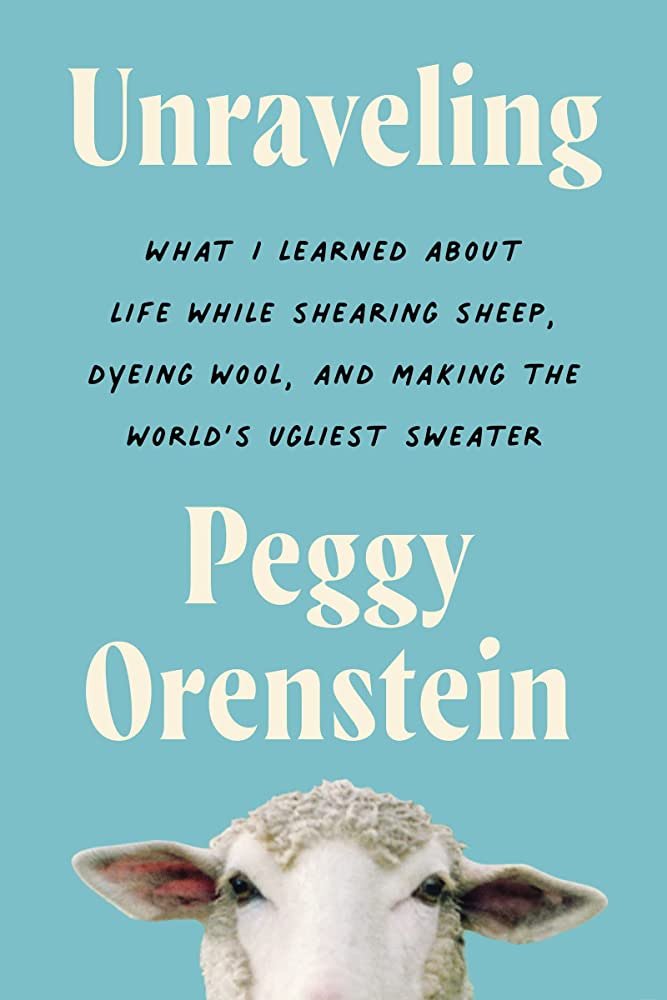“Unraveling: What I Learned About Life While Shearing Sheep, Dyeing Wool, and Making the World’s Ugliest Sweater”
By Peggy Orenstein
HarperCollins
$27.99
224 pages
Knitting Your Life
by Fran Withrow 05.2023
Are you a knitter? If so, were you an SLFHM (She Learned From Her Mom)? Peggy Orenstein learned to knit from her mom at age eleven, so when Covid-19 turned her world upside down, she decided to knit a sweater “from scratch,” first shearing a sheep, then carding, spinning and dyeing the wool before knitting what she calls “the world’s ugliest sweater.” I found her sweater endearing, though, precisely because it wasn’t perfect.
Even if you are not a knitter, like me, you will find much to enjoy in “Unraveling.” This lovely book weaves together Orenstein’s sweater-making insights with the bittersweet milestones of her daughter’s imminent departure for college, acknowledgment of her own aging, and her father’s descent into dementia.
Orenstein’s description of the backbreaking, difficult task of sheep shearing is eye-opening. She struggles to wash the wool, to spin it into yarn, and then to dye it. This is not a task for the faint-hearted! And as she forges ahead with determination, she learns about so much more than just the basic skills needed to knit her sweater.
Why is spinning typically the purview of women and how is this process connected with the patriarchy? How has the creation of clothing been altered over time? And critically, how can we address the problem of our dirt cheap, throwaway clothes that discharge minuscule plastic pieces into our waterways and then into our bodies? The environmental and social impact alone of the synthetic materials used in our clothes could fill a book. Orenstein takes just a few pages to acknowledge that it seems daunting to try to shop for clothes responsibly. Then again, she says, we did it with organic produce, so why not?
Orenstein describes how the ever-changing ways of making clothing have altered history. For instance, mill work in the early 1900s, typically done by girls and women, was extremely dangerous. Social activists fought for change, especially after the Triangle Shirtwaist Fire in 1911, where 146 immigrant workers perished either in the fire or from leaping out windows to their deaths below. Our government had previously been aware of how terrible working conditions were, but, you know, power and profit and all. It took the crisis of a fire for real change to occur. Orenstein sees similarities between those mill workers asking for better conditions and today’s activists who urge action on climate change and health care.
Color is key, and Orenstein ends up choosing blue as the dye of choice for her sweater. This leads her to discuss the history of blue dye and its terrible connection to slavery. In addition, the expense of creating certain colors is one reason why blue, red, and purple have in the past been seen as suitable only for the elite of society.
In the end, Orenstein’s knitted sweater is the consummate symbol for life: beautiful, challenging, messy, and imperfect. Filled with unknowns, our lives might unravel at any time. Yet we too can knit together the uneven threads of life, one stitch at a time, making our own “ugly sweaters” that tell the flawed yet wonderful stories of our lives.

